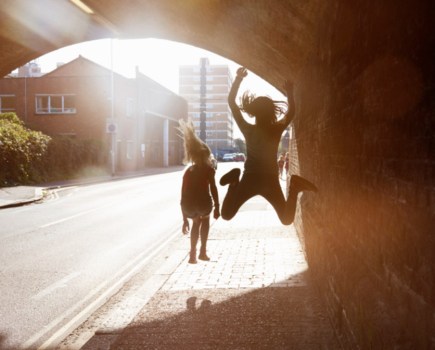Eddie Adams shocking execution picture was one of the key images to galvanise the anti-Vietnam War movement, writes David Clark

On 1 February, 1968, photographer Eddie Adams was on the streets of Saigon in South Vietnam to cover the Tet Offensive that had begun the previous day. This was a phase of the Vietnam War during which the National Liberation Front for South Vietnam (the NLF, which was also known as the Viet Cong) and the North Vietnamese Army launched a series of attacks on the forces of South Vietnam, the US and its allies.
Adams was 34 years old and working for the Associated Press. Earlier in his career he had worked as a combat photographer in the Korean War while serving as a US Marine. In 1965, he began covering the Vietnam War as a freelance photographer.
While covering events on this day, Adams met an NBC television crew who were on their way to film a minor battle in Cholon, the Chinese section of the city. He accompanied them and soon witnessed a prisoner in a plaid shirt, with his hands tied behind his back, being led onto the street by South Vietnamese police. Adams followed them.
Events unfolded rapidly, as Adams later recalled in an interview with fellow photographer Robert Farber. ?Out of nowhere to my left, this guy, we didn?t know who he was, reached for his pistol and I thought he was going to threaten [the] prisoner,? he recalled. ?I had a 35mm lens on the camera and it was a full frame. He reached for his pistol, and as he reached
for his pistol I took the picture.?
As Adams pressed the shutter release, the gun was fired. His extraordinary photograph, shot at 1/500sec, captured the exact moment of the prisoner?s death, before the bullet had even left his head. After shooting a few more frames of the scene, Adams left. He didn?t initially realise either the significance of the moment he had captured or the impact the picture would have.
?I thought absolutely nothing of it,? he said in another interview. ?I went back to the AP office and I dropped [the film] off. I said, ?I think I got some guy shooting somebody. And I went to lunch. It was like, so what? It was a war? he was a prisoner, and he shot him. I might have done the same thing.?
The picture came to the attention of Horst Faas, then working on the AP picture desk in Saigon. ?Running my Nikon eyeball quickly over a roll of black & white film from Eddie Adams,? Faas later wrote, ?I saw what I had never seen before? the perfect news picture ? the perfectly framed and exposed ?frozen moment? of an event which I felt instantly would become representative of the brutality of the Vietnam War.?
The executioner was later identified as Brigadier General Nguyễn Ngọc Loan, then Chief of National Police for the Republic of Vietnam. He was shown shooting Nguyễn Văn Lém, an NLF member who was alleged to have earlier killed a South Vietnamese army colonel, his wife and six children. However, the South Vietnamese vice president, Nguyễn Cao Kỳ, later said that Lém was not part of the Viet Cong military, but a high-ranking political official.
Whether Lém was guilty or not, the callous disregard for human life captured in Adams? image caused outrage around the world. Public demonstrations followed and many Americans began to seriously question their country?s military involvement in the region.
The picture won Adams a Pulitzer Prize for Spot News Photography and a World Press Photo award in 1969. However, the consequences of shooting the image were to haunt Adams for the rest of his life.
General Loan was forced to flee his homeland after the fall of Saigon in 1975. He later settled in northern Virginia in the US, and opened a pizza restaurant. However, he was forced to
close the business in 1991 when his true identity was revealed. He died from cancer in 1998.
Adams always sympathised with Loan and later got to know him well. After Loan?s death, Adams wrote a Eulogy for him in Time magazine. ?I won a Pulitzer Prize in 1969 for a photograph of one man shooting another,? he wrote. ?Two people died in that photograph: the recipient of the bullet and General Nguyễn Ngọc Loan. The general killed the Viet Cong; I killed the general with my camera.
?Still photographs are the most powerful weapon in the world. People believe them, but photographs do lie, even without manipulation. They are only half-truths. What the photograph didn?t say was, ?What would you do if you were the general at that time and place on that hot day, and you caught the so-called bad guy after he blew away one, two or three American soldiers???
After Vietnam, Adams went on to carry out photographic assignments in many
more wars and later he photographed some of America?s most famous celebrities. He died in New York in 2004.
Although ?Saigon Execution? remains his most famous image, Adams himself was most proud of his photographs of 48 Vietnamese refugees who travelled to Thailand on a 30ft (9m) boat in 1977, but were not allowed to enter the country. The photographs are widely believed to have influenced the US government?s decision to give asylum to around 200,000 South Vietnamese refugees in the 1970s and ?80s.
?I would have rather won the Pulitzer for something like that,? Adams later remarked. ?It did some good and nobody
got hurt.?
For back issues of these articles please visit our Contact us page for more details





